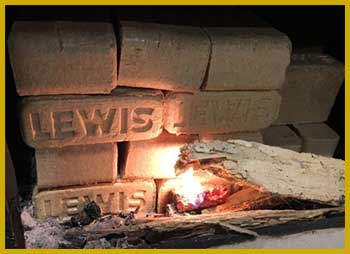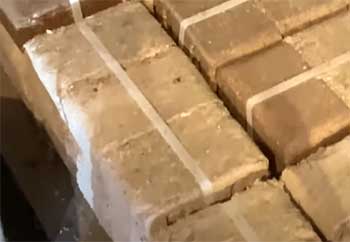Going green has never been easier – this new system is energy efficient and environmentally friendly. Some people are even going as far as to say that a biomass heating system will allow us to live more sustainably than ever before in the future.
And we couldn’t be more excited about it.
So, what makes biomass fuel so great? Why is it the green energy source for many people worldwide? Let’s break down the facts and discover why it’s becoming so popular.
Features of Fiber Fuel
Like any fuel, natural fiber firewood was subjected to rigorous testing by the U.S. Department of Energy and Developmental Services to evaluate its effectiveness as a heat provider and the overall environmental impact it would have on one’s home, surrounding air, and the environment at large.
Other characteristics that set natural fiber fuel (NF) apart from traditional firewood are as discussed below:
- Convenience

If you don’t have much time to gather, choose, and split firewood, fiber fuel is for you.
These blocks come ready to use on the stove.
This also eliminates the energy you would have used for cutting, splitting, stacking, or drying firewood.
Fiber fuel can also during any season since you don’t need to wait for the blocks to dry as it is with traditional firewood.
You can use the time you would have used to prepare firewood for other essential things.
- Safety
Fiber fuels are made using 100% wood compressed under high pressure of over 22,000 pounds. No binders or glue are used to bind the wood particles, meaning the blocks do not produce harmful fumes when burning.
Since all the wood waste used to make the bricks was kiln-dried, there is significantly less moisture to interfere with optimal combustion.
As a result, there is a reduced possibility of creosote accumulation in chimneys, which reduces the chance of chimney fires. Additionally, it implies less ash and pollutants compared to hardwood.
- Eco Friendly
In most cases, using wood as a fuel source is more cost-effective than fossil fuels and is also better for the environment. The carbon footprint of burning Fiber Fuel Bricks is negligible since burning wood only releases the greenhouse gases it absorbed while functioning.
- Clean And Ready to Use
In contrast to wood bricks, which must be dried or seasoned before use, fiber fuel bricks are ready to use as soon as you buy them. Insects, mold, and filth are also less likely to enter your home due to this.
Fiber Fuel is a fantastic option unless you prefer living in a bug and mold-spore-filled house.
- Easy to Manage
A rectangular log of fiber fuel is undoubtedly simpler to handle. It is easy to stack, takes up little room, and weighs a sensible amount.
They are also considerably safer than loading a hot stove or furnace with larger, heavier pieces of firewood that may or may not stay where you want them to.
- Amount Of Heat Produced

Bricks, instead of pellets, can be used in wood stoves, allowing the heat to be maintained even when the electricity is down.
In addition, the benefits of using kiln-dried Eastern White Pine’s high BTU density and high compression rate for bricks are taken into account.
Additionally, a cleaner burn and fewer clean-outs are required due to Fiber Fuel’s low ash percentage.
- Storage
Since fiber fuel comes in small compact blocks, storing the blocks is easy, even with limited storage space. You, however, have to keep the blocks in a dry room.
Otherwise, they will get damp, and you will have a hard time waiting for them to dry up, which can be a long time.
- How Long Do They Last?
Fiber fuel bricks are made compact with less dust or ash. Using a couple of bricks at a time will last up to 2 hours, depending on how much airflow you allow to get into the stove.
- Cost
Although fiber fuel is way more expensive than regular firewood, its price differs from one dealer to another. You can check for fiber fuel dealers near your home and compare the prices.
What Could’ve Been Better With Fiber Fuel Blocks?
Although fiber fuel is clean, convenient, and produces enough heat when burnt, it has some downsides. Here are some of the things I was not happy about with fiber fuel:
- Availability
For starters, when I heard of the convenience of fiber fuel, I started the search for the blocks. Sadly, Fiber fuel blocks are not readily available. You will need to source them from the company that makes the block.
Due to the scarcity of these blocks in some regions, the dealers selling the fiber fuel blocks sell them at a higher cost.
- Moisture sensitivity
For expensive fuel blocks, the manufacturers could have done something about the moisture absorption rate of these blocks. If you leave fuel blocks to get some moisture, they end up soaking and not functioning as they should.
The manufacturers may use wood that does not absorb much moisture and dries up faster.
- Stove use
Although you can use fiber fuel blocks in your stove, the blocks will damage your stove in the long run. This is worse for people who use the fiber fuel blocks daily in their stoves. Since the blocks produce more heat, it is easy to overfire the furnace.
When you close the stove at night when the blocks are still burning, the blocks leave a black glass-like soot that is hard to remove. You will lose your stove warranty when you use the blocks on your stove.
- How Do They burn?
Aside from the advantage of fiber fuel blocks of removing more heat than other fuel when burnt, these blocks burn completely and leave no coal.
If you leave the blocks burning overnight, you will have to start a new fire in the morning because they do not leave any coal.
Aside from the few issues and the cost concept, fiber fuel blocks are suitable for those who learn how to work around the blocks.
Frequently Asked Questions (FAQ)
Since the bricks are made free of glue or binders, they produce less dust, ash, and creosote.
Various factors affect how long Biobricks last but putting a few blocks of Biobricks might last up to 2 hours without adding more blocks.
The Biobricks is a new invention that runs on only one thing: wood. The process is almost entirely chemical-free and even cuts out environmentally hazardous particulates when burned. Whether you’re looking to cut down your carbon footprint or create a more natural atmosphere, this could be the answer.
Yes. Bio Bricks can be used in wood stoves to produce enough heat to heat your home. And the good thing about using Biobricks on wood stoves is that they have less ash and no smoke.
Conclusion
According to multiple fiber fuel reviews online and my personal opinion based on my experience, fiber fuel is one of the best energy sources. Fiber fuel bricks are made using clean wood. They are easy and ready to use in the store and can be used in a wood stove.
Fiber fuels are economical as they take longer to burn and produce clean fumes with minimal dust, ash, and creosote.
